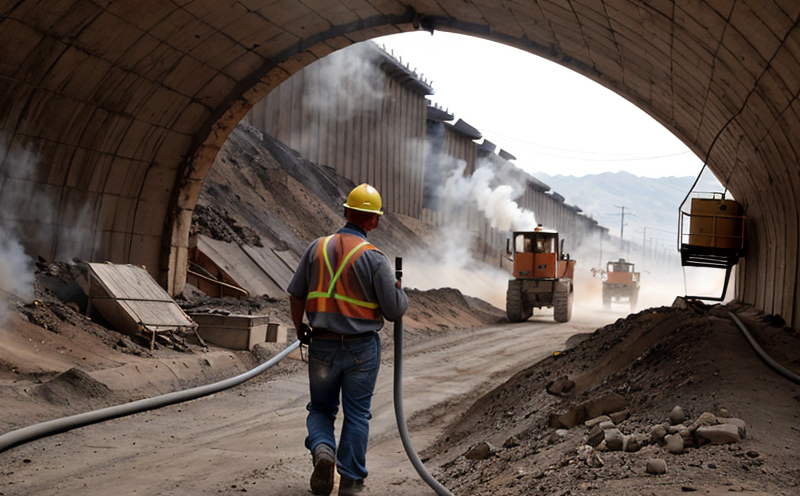Gravimetric Analysis of Settled Dust in Mines Testing
The gravimetric analysis of settled dust is a critical analytical method used to assess the levels of respirable and non-respirable particulate matter within mines. This service plays an essential role in ensuring worker safety, compliance with environmental regulations, and overall quality control in mining operations.
Respirable dust can lead to serious respiratory diseases if not controlled effectively. The process involves collecting samples from various points within the mine using specialized air samplers designed to capture settled particulate matter. These samples are then analyzed for their mass content using precision analytical balances, ensuring accuracy down to micrograms.
The primary goal of this service is twofold: first, it helps in identifying potential sources of dust generation; second, it monitors the effectiveness of control measures implemented by mine operators. By regularly performing these analyses, mines can maintain a safe working environment for their employees while adhering to strict regulatory requirements.
The gravimetric analysis process typically follows international standards such as ISO 12469 and EN 13708, which provide guidelines on sample collection methods, storage conditions, and analytical techniques. The results obtained through this method are used by quality managers and compliance officers to make informed decisions about operational practices.
In addition to health and safety considerations, understanding the composition of settled dust is also vital for environmental management purposes. Mines have a responsibility towards sustainable development, including reducing their ecological footprint. Accurate measurements of dust particulate matter contribute significantly to this effort by providing valuable data needed to implement appropriate mitigation strategies.
The equipment utilized in conducting gravimetric analysis includes not only high-precision analytical balances but also various types of air samplers capable of capturing fine particles efficiently. These devices are calibrated regularly according to manufacturer specifications and industry best practices to ensure consistent results over time.
Once collected, samples undergo rigorous preparation before being weighed on the analytical balance. This includes ensuring that all residues adhered to the collection medium are transferred accurately into the weighing vessel without loss or addition. After drying at specified temperatures (typically 105°C), the final weight of each sample is recorded and compared against initial weights.
This service provides invaluable insights into dust levels within mines, helping stakeholders take proactive steps towards maintaining a healthy work environment while complying with relevant laws and regulations. It supports continuous improvement initiatives aimed at enhancing occupational health and safety standards across all sectors involved in mining activities.
Applied Standards
| Agricultural Standard | Description |
|---|---|
| ISO 12469-1 | Dust sampling and gravimetric analysis - Part 1: General requirements and terminology. |
| EN 13708 | Dust sampling and gravimetric analysis for occupational exposure assessment. |
Benefits
- Ensures compliance with local, national, and international regulations regarding airborne particulate matter in industrial environments.
- Identifies sources of dust generation within the mine, enabling targeted interventions to reduce exposure risks.
- Supports continuous improvement initiatives aimed at enhancing occupational health and safety standards across all sectors involved in mining activities.
- Contributes significantly to sustainable development by providing valuable data needed to implement appropriate mitigation strategies for reducing the ecological footprint of mining operations.
International Acceptance and Recognition
The gravimetric analysis method widely accepted globally due to its robustness and reliability in measuring settled dust. Many countries have adopted these standards into their national legislation, recognizing the importance of accurate measurement techniques for protecting workers' health.
Australia, Canada, Europe, and North America are among those regions where this service is commonly employed by mining companies operating within their jurisdictions. The International Labour Organization (ILO) also recommends using gravimetric analysis as part of its occupational health and safety guidelines.
By adhering to internationally recognized methods like ISO 12469-1 and EN 13708, mines demonstrate their commitment to maintaining high standards of operational excellence. This approach fosters trust among stakeholders, including employees, regulators, investors, and the public at large.





